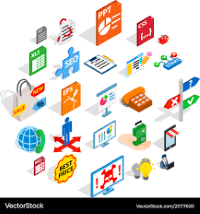The latest laptop models come with a range of advanced features and capabilities, but like any technology, they have their strengths and weaknesses.
Here's a look at the pros and cons of the newest laptops:
Pros
1. Performance Upgrades
- Powerful Processors: Equipped with the latest Intel, AMD, or Apple M-series processors, these laptops offer significantly improved performance, making them ideal for demanding tasks like video editing, 3D rendering, and gaming.
- Increased RAM and Storage: Many new models offer up to 64GB of RAM and fast SSDs with capacities up to 4TB, allowing for faster multitasking and ample storage space for large files.
2. Display Quality
- High-Resolution Screens: 4K and QHD displays are becoming more common, offering sharper visuals and more vibrant colors, which are excellent for content creators and media consumption.
- OLED and Mini-LED Technology: Some models feature OLED or Mini-LED displays, providing deeper blacks, higher contrast, and better HDR performance.
3. Portability and Design
- Slim and Lightweight: Advances in design and materials have made laptops thinner and lighter without sacrificing performance, making them more portable.
- Premium Build Materials: Use of materials like aluminum, carbon fiber, or even magnesium alloy for a more durable and premium feel.
AfriPrime App link: FREE to download...
https://www.amazon.com/Africircle-AfriPrime/dp/B0D2M3F2JT
4. Battery Life
- Longer Battery Life: New laptops often feature improved battery life, with some models offering up to 18-24 hours on a single charge, making them more reliable for long workdays or travel.
- Fast Charging: Many laptops now support fast charging, allowing users to quickly recharge their devices to 50% or more in under an hour.
5. Connectivity and Ports
- Wi-Fi 6E and 5G Support: The latest laptops often include Wi-Fi 6E and 5G connectivity, ensuring faster and more reliable internet connections.
- Variety of Ports: Despite the trend towards thinner designs, many new laptops still offer a good selection of ports, including USB-C, Thunderbolt 4, HDMI, and even SD card slots.
6. Enhanced Security Features
- Biometric Security: Improved fingerprint scanners, facial recognition, and other biometric security measures make these laptops more secure and convenient to use.
- TPM 2.0 and Secure Boot: Built-in security features like TPM 2.0 and Secure Boot ensure that your data is protected at the hardware level.
7. Software and Ecosystem Integration
- Optimized Operating Systems: Whether it’s Windows 11, macOS, or Linux, the latest laptops come with operating systems optimized for better performance, multitasking, and security.
- Ecosystem Integration: Especially in the case of Apple and Microsoft devices, there’s seamless integration with other products like tablets, smartphones, and cloud services.
AfriPrime App link: FREE to download...
https://www.amazon.com/Africircle-AfriPrime/dp/B0D2M3F2JT
Cons
1. Price
- High Cost: The latest models, especially those with high-end specs, can be very expensive, with prices easily reaching $2,000 or more for premium configurations.
- Incremental Upgrades: Some laptops offer only incremental upgrades over their predecessors, making it hard to justify the high cost for existing users.
2. Port Reduction
- Fewer Traditional Ports: To achieve thinner designs, some laptops reduce the number of ports, relying heavily on USB-C. This might require users to carry dongles or adapters, which can be inconvenient.
- No Ethernet Ports: Many modern laptops have omitted Ethernet ports, which can be an issue for users needing a stable wired connection.
3. Upgradability
- Limited Upgrade Options: Many newer laptops, particularly ultrabooks and those from Apple, have soldered RAM and storage, limiting the ability to upgrade components after purchase.
- Integrated Components: As laptops become more integrated, repairs and upgrades become more difficult and costly.
AfriPrime App link: FREE to download...
https://www.amazon.com/Africircle-AfriPrime/dp/B0D2M3F2JT
4. Thermal Management
- Thermal Throttling: Thinner designs sometimes compromise on cooling, leading to thermal throttling during heavy tasks, which can reduce performance.
- Fan Noise: In models where cooling is a priority, the fans can become quite loud under heavy load, which might be distracting.
5. Software Compatibility
- New OS Adaptation: The latest operating systems (e.g., Windows 11) might have compatibility issues with older software or peripherals, requiring users to wait for updates or find alternatives.
- Learning Curve: New features in updated operating systems can have a learning curve, which might slow down productivity initially.
6. Battery Longevity
- Battery Degradation: While battery life is generally better, the non-replaceable nature of many batteries means that over time, as the battery degrades, users may see a significant drop in usage time, necessitating costly repairs or replacements.
7. Weight Distribution and Comfort
- Weight Balance Issues: In some ultra-thin models, weight distribution can feel off, making the laptop less stable on uneven surfaces or laps.
- Keyboard and Trackpad Sensitivity: Some models may have overly sensitive or less responsive keyboards and trackpads, which can be frustrating for heavy typists.
The latest laptops offer impressive advancements in performance, display quality, and portability, making them powerful tools for professionals and creatives. However, the high cost, limited upgradability, and potential thermal issues may be drawbacks for some users. Balancing these pros and cons is key to determining whether a new laptop is the right investment for your needs.
AfriPrime App link: FREE to download...


